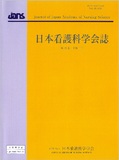Japanese
English
- 販売していません
- Abstract 文献概要
- 参考文献 Reference
要旨
目的:乳がん術後患者のボディイメージに焦点を当て,身体活動に関連する要因を明らかにする.
方法:乳がん術後女性127人に無記名自記式質問票による横断調査を行い,76人(59.8%)から回答を得た.ボディイメージはBAS-2,身体活動量はIPAQで評価した.欠損値のない53人を対象に相関分析を行った.
結果:通院治療なし群ではボディイメージと中等度以上の活動量間で正の相関(ρ = 0.51),夫との同居と歩行量間で正の相関(ρ = 0.59)があった.通院治療あり群ではボディイメージと活動間で有意関連がなかったが,きょうだいとの同居が中等度以上の活動量と正の相関(ρ = 0.35),ステージ(ρ = -0.37),治療法の数(ρ = -0.39)と歩行量間で負の相関を示した.
結論:乳がん術後患者のボディイメージと身体活動の関連は通院治療有無によって異なり,身体活動を促すには,病状にあわせた支援の必要性が示唆された.
Objective: To determine the factors associated with physical activity in postoperative breast cancer (BC) patients, with a special focus on body image.
Method: In a cross-sectional survey, we used the Body Appreciation Scale-2 and International Physical Activity questionnaires to evaluate body image and physical activity, respectively in 127 females with a history of BC surgery. Then, 53 participants with no missing values for physical activity were enrolled. The relationship between body image and physical activity was examined using correlation analysis.
Results: In women without outpatient treatment, positive correlations were observed between body image and moderate- to high-intensity physical activity (p = 0.51) and between living with a spouse and the amount of walking (p = 0.59). Conversely, in women with outpatient treatment, there was no significant relationship between body image and physical activity. Besides, while living with siblings was positively associated with moderate- to high-intensity physical activity (p = 0.35), BC stage and the number of treatment types were negatively correlated with the amount of walking (p = -0.37 and -0.39, respectively).
Conclusion: The relationship between body image and physical activity varied depending on the presence or absence of outpatient treatment. Supportive intervention programs tailored to the patient's medical condition may improve physical activity in postoperative BC patients.
Copyright © 2020, Japan Academy of Nursing Science. All rights reserved.


